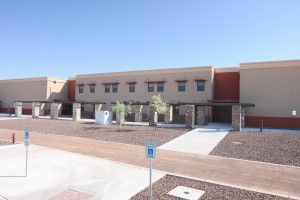 For over 30 years the commercial modular industry and the Modular Building Institute have promoted the benefits of modular construction when compared to site construction. Modular buildings are faster, less expensive, greener, relocatable, and available through alternate forms of financing. Despite these benefits, modular construction cannot meet every building need; however, there is an option that can expand the flexibility of modular construction projects. Meet hybrid construction.
For over 30 years the commercial modular industry and the Modular Building Institute have promoted the benefits of modular construction when compared to site construction. Modular buildings are faster, less expensive, greener, relocatable, and available through alternate forms of financing. Despite these benefits, modular construction cannot meet every building need; however, there is an option that can expand the flexibility of modular construction projects. Meet hybrid construction.
For years major contractors have worked with modular dealers and manufacturers on large projects in which the project combined commercial modular construction with other forms of onsite construction. In some cases the onsite construction merely addressed site utilities, parking, landscaping, etc. However, in other cases modular construction was combined with other building systems to complete a sophisticated building complex. Many general contractors refer to projects in which multiple building systems are used as hybrid construction. These onsite building systems may include structural steel additions, tilt-wall additions, block wall systems, or steel building systems. Some of the reasons for using onsite building systems include unusual structural loads, spans beyond 80 feet, large eve heights, heavy internal structural loading or fire-ratings that traditional modular can not meet. Gymnasiums, cafeterias, theatres, warehouses and manufacturing are examples of building types that can more effectively be built using a combination of offsite and onsite building systems.
Advantages of Hybrid Construction
One of the key advantages to hybrid construction is the accelerated construction schedule. While the site development is taking place, the modular sections are being built in a manufacturing facility and the steel building system is being manufactured by a steel fabricator. By the time the slab-on-grade foundation is completed for both building systems, the modular buildings and the steel building system are ready for erection. Once installation is completed, the interior and exterior finishes can be completed. The benefits are very similar to those of permanent modular building systems, but the use of multiple building systems may allow a contractor to more efficiently build some complex facilities.
Ramtech Building Systems
Ramtech Building Systems is a 30 year old design-build construction company that owns its own modular manufacturing plant. When combining our in-house design, manufacturing, and construction capabilities, Ramtech is able to pursue projects that go well beyond what is normal for modular construction. While Ramtech often acts as the prime contractor responsible for the total project, we have also collaborated with large general contractors as a subcontractor / supplier for the modular construction component of a larger project. Over the last three years, Ramtech, working as a subcontractor to Hensel Phelps, completed approximately 400,000 square feet of permanent modular office space at Fort Bliss while Hensel Phelps completed approximately 720,000 square feet of adjoining tilt wall construction that served as warehouse space. This is a perfect example of hybrid construction. Hybrid construction combines multiple building systems in order to take advantage of each building system’s strength.
When Ramtech thinks of school construction, we immediately think of hybrid construction. Modular construction is perfect for building classroom and office space, while steel building or tilt-wall building systems are ideal for gymnasiums and cafeterias. With 18 foot eves and 100 foot clear-spans, Ramtech usually utilizes a steel building system with a standing seam roof, and with masonry or steel exterior siding. In addition to working with several West Texas school districts, Ramtech also was a key subcontractor responsible for all the structural steel fabrication and installation associated with Texas Christian University’s indoor basketball and football practice facilities.
Overall, the speed of construction significantly lowers the cost of construction, providing a finished building faster, for less cost, and with a higher level of quality and safety than projects that are 100% site built. Hybrid construction is not only ideal for school construction, it is also often used for office/warehouse and governmental facilities as well.
